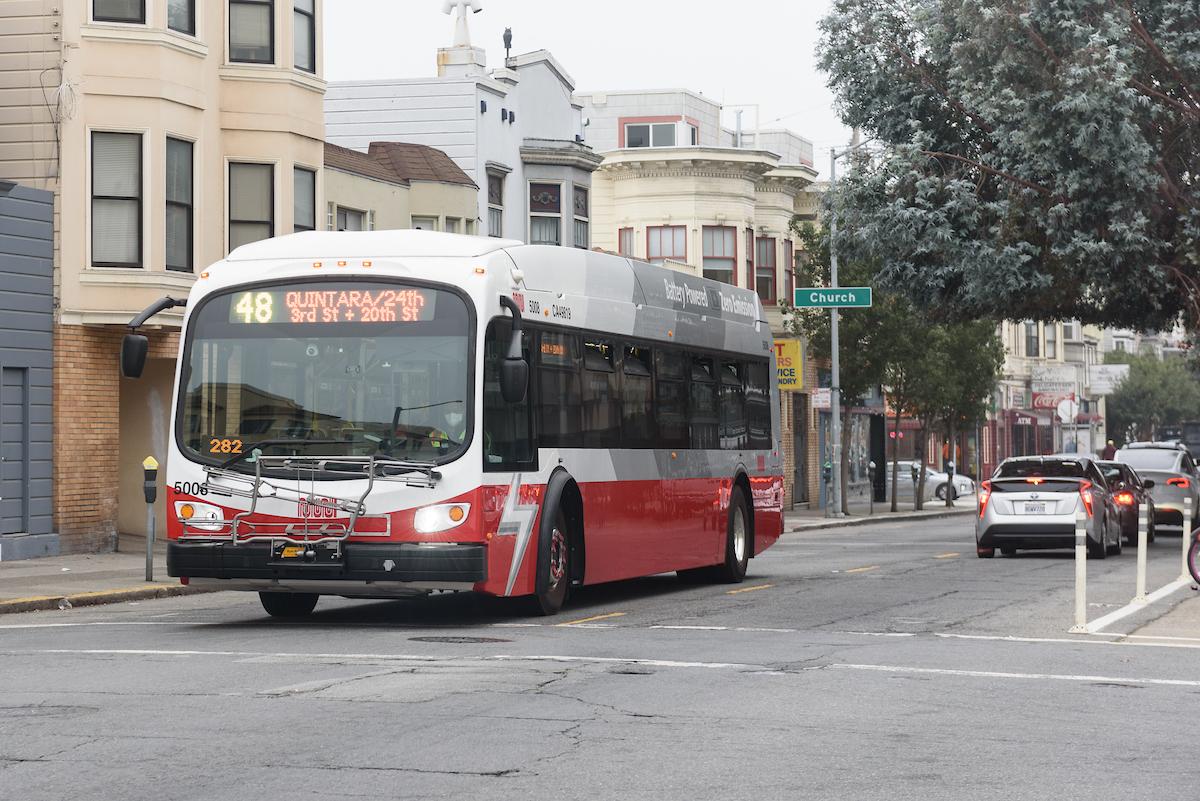Just in time for Earth Day, it’s Climate Week in San Francisco!
San Francisco Climate Week is an environmental celebration. It brings people together to collaborate, learn from each other and work on climate solutions. Last year, thousands of SF Climate Week attendees enjoyed hundreds of exhibitions, panels and workshops.
For us at the SFMTA, every week is Climate Week. Our efforts to make transit, walking and biking safe and convenient help create a cleaner San Francisco. And we’re highlighting the ways we help you go green to get around.
Over the next few days, we’ll showcase sustainable types of travel, exciting events and major upgrades we’ve made recently. We want you to have the best experience, however you move through the city.
Improving San Francisco’s carbon footprint
The city has some strong climate goals. They include:
- Reducing greenhouse gas emissions to under 40% of 1990 levels by 2030 and reaching net-zero emissions by 2040
- Shifting 80% of trips to low-carbon options by 2030
- Ensuring that all vehicles registered in the city are electric by 2040
Almost half of San Francisco’s greenhouse gas emissions come from the transportation sector. That’s where our work can and does make a difference. Most of those emissions come from private cars and trucks. Public transit, meanwhile, produces less than 2% of the city’s emissions. And walking, biking and rolling produce none.

We have added battery electric, zero emissions buses to the Muni fleet.
Muni: the city’s environmentally forward transit system
Muni runs the greenest fleet in North America. In fact, we have operated a network of zero-emission vehicles for decades.
- Our cable cars and historic streetcars use no fossil fuels
- Our trolleybuses and Muni Metro trains run on electricity
- Even our buses are low-emission vehicles
But we aren’t stopping there. We continue to look for the latest in green transportation technologies. Our Board of Directors and the San Francisco Board of Supervisors recently approved the purchase of more than half a dozen new battery electric buses. When they’re delivered next year, they will bring our battery electric bus fleet to 30 vehicles.
All of this means that the half a million people who ride Muni every day are supporting a more sustainable San Francisco. And one of the best things you can do to reduce carbon emissions is to join them on our buses, trains, streetcars and cable cars.

Young students pedal their way to class during a recent Bike & Roll to School event.
Biking and rolling to a greener future
Our Board of Directors adopted our Biking and Roling Plan last month. The plan will direct future investments we make in San Francisco’s biking and rolling infrastructure. It also will support active transportation programs over the coming decades. The goal is to make biking and rolling safe and viable options for everyone across the city.
We also work with San Francisco Unified and transportation advocacy groups on the Safe Routes to School program. This program helps families choose the best way for their kids to get to school. That includes driving, but the program encourages low-carbon to no-carbon transportation options such as biking, walking and taking Muni.
And the Safe Routes to School program’s annual Bike & Roll to School Week is coming up next month. That’s one of the events we’ll be telling you more about this week. When you and your kids bike and roll, you play an active role in reducing pollution and greenhouse gases.
Transportation options that make a difference
We want to make electric vehicle charging more accessible in San Francisco. So, along with SF Environment, Public Works and the Public Utilities Commission, we’re bringing charging the curb.
We are starting to create a network of charging stations at parking spaces throughout the city. That’s in addition to the charging stations in our garages. This pilot program will make it more convenient for people who drive EVs to charge in San Francisco. And with it, we’ll install the infrastructure to support more EVs in the future and meet our climate goals.
The first curbside charging station is going into service in the Duboce Triangle neighborhood this week.
Safety also is a big part of our work to support emissions-free transportation options. Our Quick Build Program helps us make streets safer, faster. We focus on the High Injury Network. Those are the streets where the most crashes happen, and we add safety improvements quickly for people walking and biking. This work makes it easier for people to choose no-carbon ways to get around and to connect with Muni.
We are building a safer, more connected transportation system. And by improving transit access and expanding mobility options, we can prepare San Francisco for a climate-resilient future and make it easy for you to help us.
- 공유 링크 만들기
- X
- 이메일
- 기타 앱
- 공유 링크 만들기
- X
- 이메일
- 기타 앱

댓글
댓글 쓰기